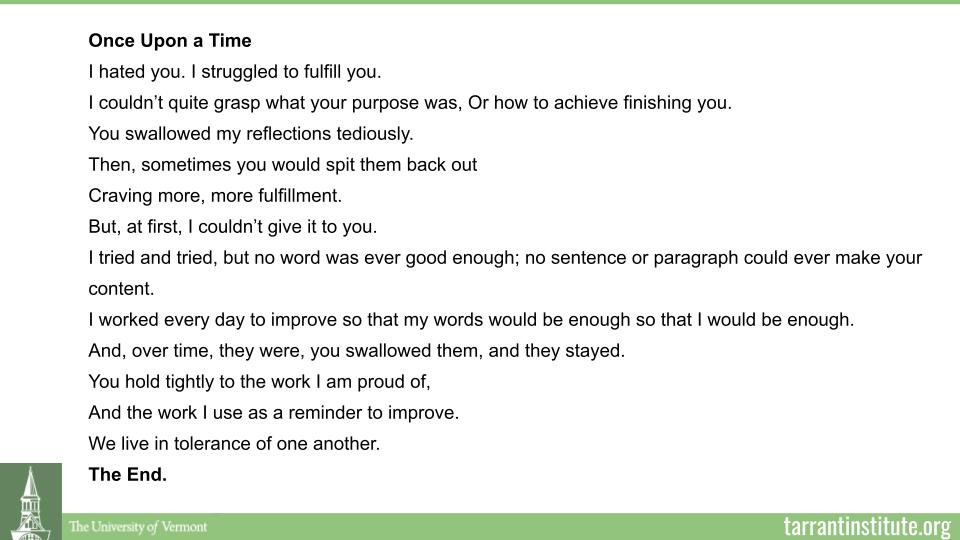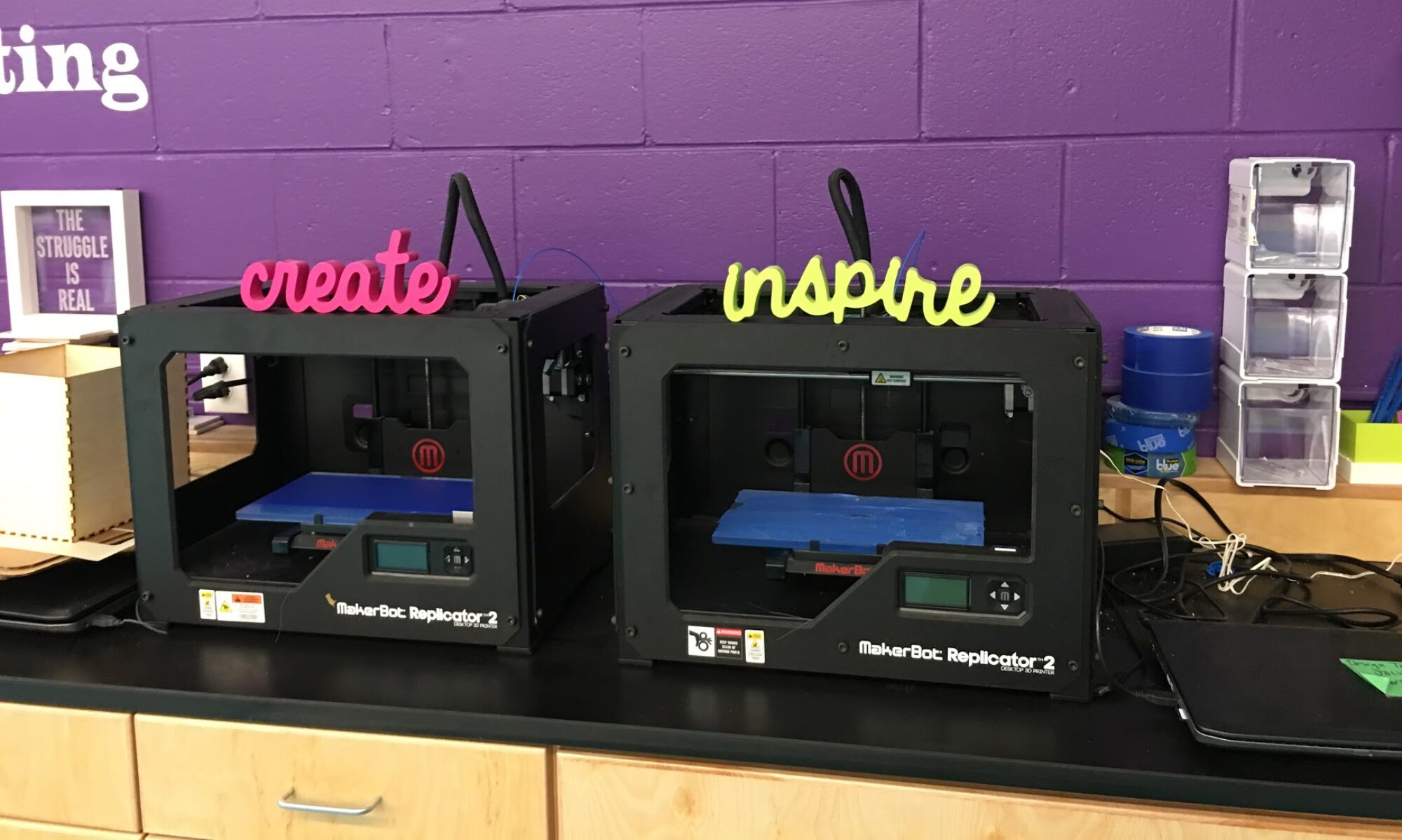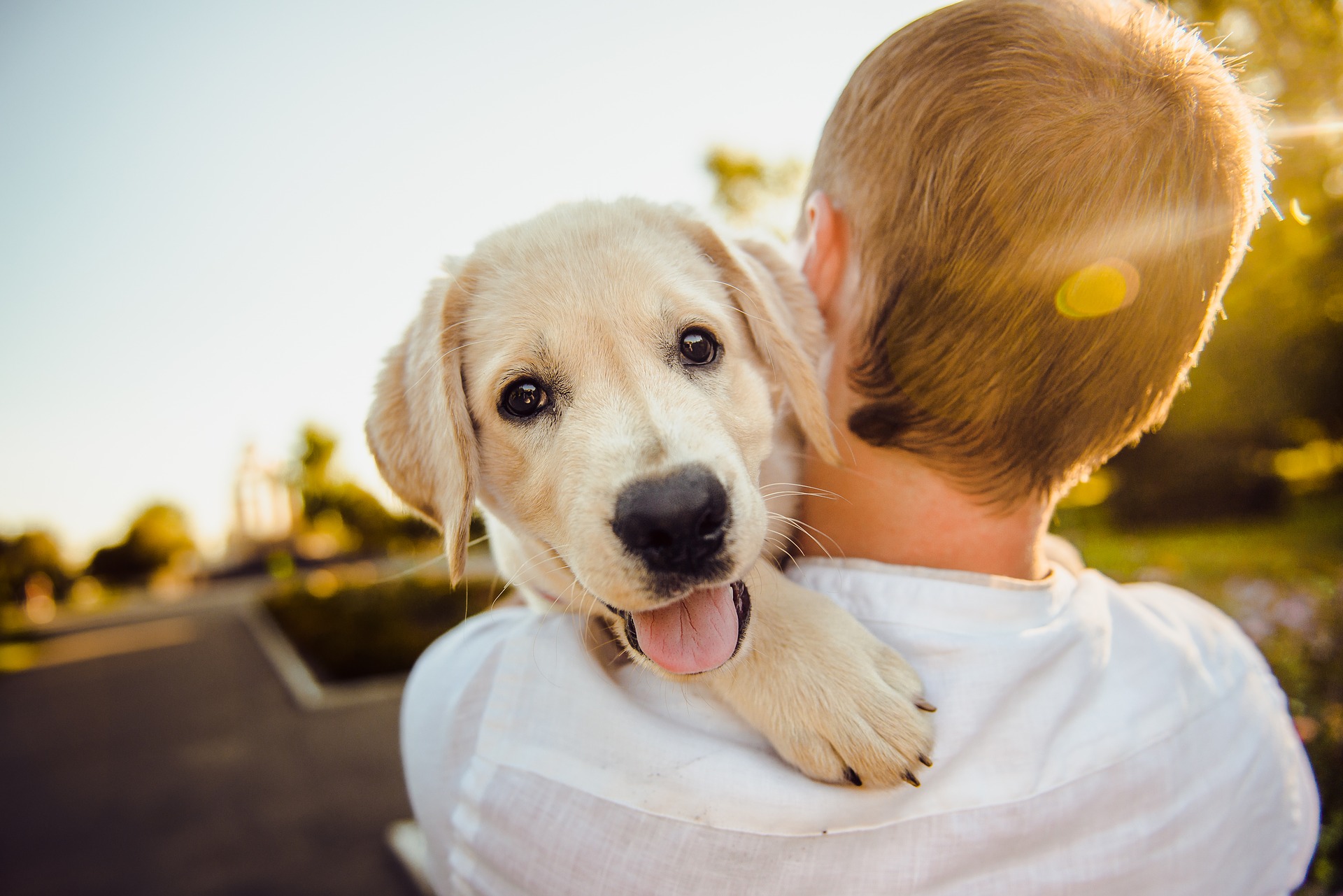With contributions from Emma Vastola
Take a moment to think about a learning experience that was meaningful to your students. How do you know that it was meaningful? How did they communicate that to you?
In the Two Rivers Supervisory Union (TRSU), middle grades students are documenting their meaningful learning experiences using PLPs. You can check out some examples here.
Developing a district wide PLP
A couple of years ago PLPs were new to TRSU middle grades teachers and students. We started by coming to a consensus on what a PLP was (and wasn’t!). We looked at examples, talked about the purpose of PLPs, and thought about how they would best serve our learners.
The results: a list of non-negotiables.
TRSU PLPs begin with student identity. Students add evidence of learning connected to transferable skills. All kinds of evidence. And they reflect on that learning. It’s simple, really.
Except it’s not. If it were that easy every student in Vermont would have a rockin’ PLP.
First, there is the problem of getting started.
How would teachers introduce PLPs to their students? And how would teachers stay on the same page? Enter the PLP slideshow, two actually.
These slides served as conversation starters – providing enough information for students and teachers to discuss PLPs and hopefully get excited about them.
Second, and more importantly, is the problem of keeping going!
If the PLP was really going to engage students in their learning, it needed to be more than an online filing cabinet. It needed to be a kind of pet – something that needs routine care and feeding. So we set some goals. We would:
- Reserve 30 minutes per week to feed the PLP
- Use the language of the transferable skills ALL OF THE TIME, in ALL OF OUR CLASSES, not just during PLP time
- Talk about the PLP in relation to student learning and class work
A bigger toolbox: Margaret Dunne’s experience
When we first began it felt like PLPs were just one more ball that I needed to keep in the air. My main focus was unpacking what the transferable skills meant for 8-10 year olds and even for myself. Does creativity just mean art? At this point the PLP wasn’t really connected to our other work but it was a start.
Over time It became clear that I needed to center the PLP in the work of my classroom and not view it as an add-on. I thought of the PLP as an artist’s portfolio – a collection of greatest hits.
Through regular care and feeding the PLPs were growing, but some of the posts didn’t fit my idea of a “greatest hit.” I struggled with this, but eventually came to realize that it was not my role to be the gatekeeper of what could or could not be students’ PLPs. What was important was that students’ posts were meaningful to them. I was beginning to relinquish control and share responsibility with my students.
Now my understanding of PLPs has grown even more and I now see PLPs as a tool that can transform my teaching to be student-centered.
One of the major advantages of PLPs is that they center around developing transferable skills, while our report cards focus on standards and content. PLPs raise awareness of the transferable skills and make sure everyone – students, families, and teachers – know these skills are essential.
But, it is not like they are totally separate. While students document growth in the transferable skills they do it in the context of all content areas, from PE to Math. This work challenges me as a teacher to be more student-centered and be open to all of the meaningful learning inside and outside of school.
PLPs allow us to see a student holistically, as a whole person, and they capture the messy complicated story of learning and growth a lot more than a score on a report card. They also help students know themselves better and be known by others, which helps build our learning community. PLPs are truly a transformational tool!
Emma Vastola’s Experience
The PLP process has been empowering for students – giving them opportunities to choose what matters to them and set personally meaningful goals. An important part of this process is self-reflection.
To grow their skill of reflection students are provided many times throughout their day to reflect on a task through the lens of a transferable skill. The more students are asked to reflect on their own self within the context of a task, the deeper their sense of self becomes.
As you might expect, some students are automatically more proficient reflectors, while others need tools to develop the skill. Choice boards, reflective prompts and reflective learning scales are some tools that have been developed as scaffolds for students.
These reflection tools have helped students gain a deeper understanding of themselves. By being mindful of intentionally teaching reflection and metacognition as a literacy/communication skill, students get better at finding evidence of their work and reflecting on their progress over time.
When students focused on identity in their PLPs, they showed more agency and ownership of their learning.
By focusing on identity students are centered in their learning. They are better able to set actionable goals. These become a natural starting point for care and feeding of the PLP. The system becomes both implicitly and explicitly student-led.
A timeline like the one pictured here helps set the stage: where the PLP is woven into the fabric of everyday life in and out of the learning environment. Routine PLP work became more prevalent over time and students began to identify work that was “PLPpropriate” and communicate this work at a Student-Led Conference. Student-Led Conferences have become an opportunity for students to share work they are proud of.
Finally, let’s hear from students!
Here is a reflective “letters to my PLP” from a 6th-grade student:
Dear PLP, Thank you for staying with me throughout the year. I once thought you were hard to deal with the constant updating. But now I love hanging out with you; you’re almost like an academic therapist. We are the best of friends, and I hope you stay with me throughout all of my years. I think you are awesome! I hope you think I am too. You have seen me grow throughout 2021. And I have seen you evolve. I am proud of you, for you are one of my most outstanding achievements. Good-Bye PLP, but only for now.
And here is a poem from another 6th-grade student:

To draw on a well worn cliche, PLPs are about the journey, not the destination!
TRSU teachers have found that that journey can be transformative, but routine care and feeding of the PLP are necessary to sustain it.



4 Replies to “Care and Feeding of the PLP”
Comments are closed.